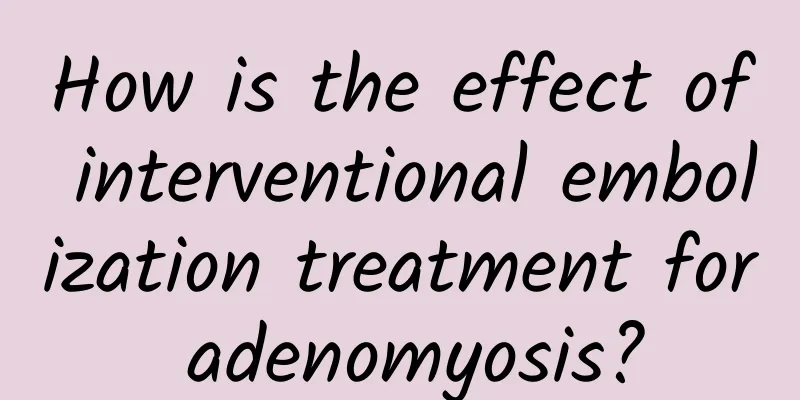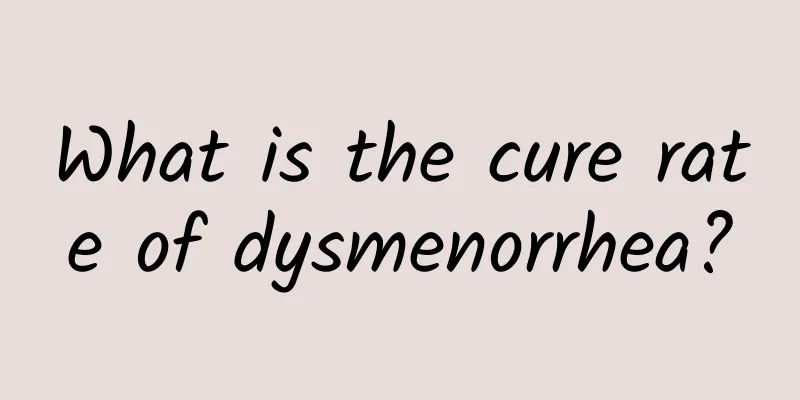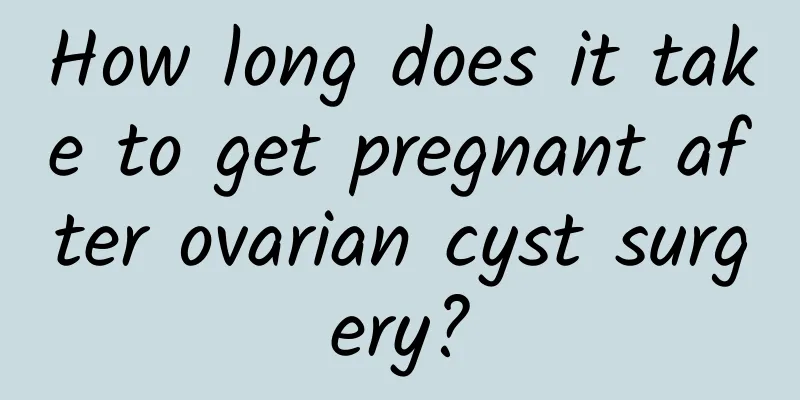How is the effect of interventional embolization treatment for adenomyosis?

|
Interventional embolization for adenomyosis is an effective non-surgical method that relieves symptoms by blocking the blood flow in the uterine artery. Adenomyosis is a disease caused by the invasion of endometrial glands and stroma into the myometrium. Interventional embolization injects embolic agents into the uterine artery through a catheter to reduce the blood supply to the lesion, thereby relieving symptoms such as dysmenorrhea and menorrhagia. A detailed evaluation is required before treatment, including imaging examinations such as ultrasound and MRI to ensure indications and safety. 1. The indications for interventional embolization therapy include patients who are ineffective with drug therapy, unwilling to undergo surgery, or with high surgical risks. The treatment process is usually performed under local anesthesia. A catheter is inserted through femoral artery puncture, and the embolic agent is injected into the uterine artery to block the blood supply to the lesion. 2. The treatment effect is significant. After treatment, most patients have significantly improved symptoms of dysmenorrhea and menorrhagia, and their quality of life has improved. Studies have shown that the effective rate of interventional embolization treatment can reach more than 80%, and the recurrence rate is low. 3. The recovery period after treatment is short, and patients usually return to normal life within 1-2 weeks. Mild abdominal pain, fever and other side effects may occur after surgery, but most of them will resolve on their own within a few days. Pay attention to postoperative follow-up and regular reexamination to evaluate the treatment effect and monitor the risk of recurrence. 4. The advantages of interventional embolization are small trauma, fast recovery, and preservation of uterine function, which is especially suitable for patients with fertility needs. However, for severe cases or patients with other gynecological diseases, surgery or other treatment methods are still needed. Interventional embolization therapy for adenomyosis is a safe and effective option that can significantly improve symptoms and enhance quality of life, but the treatment plan must be tailored to individual circumstances and performed under the guidance of a professional physician. |
<<: What to check for cervical erosion
>>: Causes of cervical hypertrophy retention cysts
Recommend
What are the precautions during the treatment of vaginitis?
Vaginitis is a gynecological inflammation that is...
What should patients with ectopic pregnancy pay attention to in daily life?
What should patients with ectopic pregnancy pay a...
Experts introduce the symptoms of senile vaginitis
Vaginitis is a common gynecological disease. In l...
Brief introduction to the care methods of pelvic inflammatory disease
Usually, we should pay attention to the signs of ...
How to regulate irregular menstruation
Irregular menstruation is a common gynecological ...
Choosing food for the Mid-Autumn Festival is easy ~ 5 tips for people with chronic diseases to stay healthy
The Mid-Autumn Festival is approaching, and the f...
Three tips for people who eat out to fight fat without worrying about food
"Foreigners, foreigners, eat out for all thr...
What are slow calories and fast calories? "This" can prevent blood sugar fluctuations and help obese people lose fat
Everyone is familiar with "Calories", b...
Do you know the factors that cause dysmenorrhea?
Do you have painful menstruation? Do you know wha...
Is it genetically determined which part of the body loses weight first? Want to lose weight in your legs, first understand these 3 things
"After so many years and having tried thousa...
What is the treatment for bacterial vaginosis?
Vaginosis is a common disease among female friend...
The most common symptoms of cervical hypertrophy
Among the many diseases of the cervix, I believe ...
What causes dysmenorrhea in girls?
Dysmenorrhea is a common reaction to menstruation...
Detailed explanation of the main causes of vulvar leukoplakia
Vulvar leukoplakia is a very common gynecological...
What to do with irregular menstruation during menopause? There are 4 dietary taboos for irregular menstruation during menopause
Menopause irregular menstruation is a special per...









